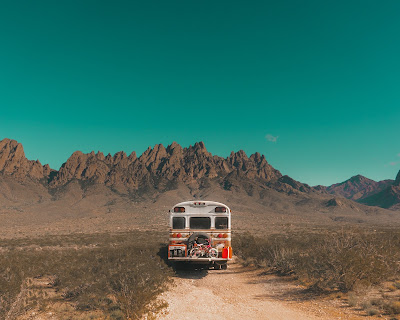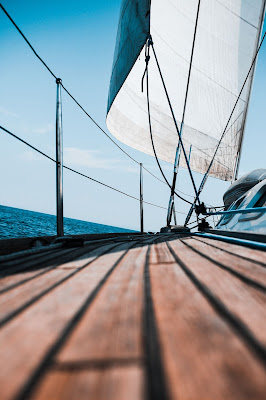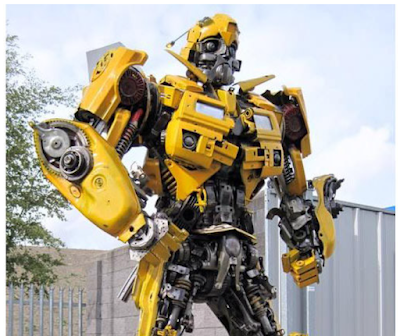A young couple sold everything they own, and with virtually no experience, bought a sailboat and started traveling. This type of nomadic minimalism fascinates me. Could you do it?
I'm talking about the book I just finished, called Bumfuzzle - Just Out Looking for Pirates by Patrick Schulte. Here's what's coming up in this post:
- The story of Bumfuzzle
- Aspects of nomadic minimalism
- Risk factors
- How nomadic minimalists transform over time
- Sailboat life
"Bumfuzzled" means confused or perplexed. Ali and Pat Schulte named their sailboat Bumfuzzle in reflection of their inexperience as sailors.
Before circumnavigating the world, they were living in a condo in Chicago. They took a single, short, sailing class (on a lake, with a training boat). After selling everything, they moved onto a used boat in Florida. With barely any practice sails, they set off on their journey.
I should also mention that they rarely cooked--they basically lived off of fast food in Chicago. That's fine when you're staying at a port. But 21 days at sea? That's not going to work. Let's just say there were a lot of repetitive meals and burned food when there were no restaurants around.
Despite all this, they made it through over 4 years of sailing. They didn't sink their boat, get attacked by pirates (
that's still a thing!), or die of malnutrition.
In the end, their journey was successful, but once they were done with the trip, it seemed like they were pretty much done with boat life. However, during their trip, they had all of their possessions on a relatively small boat. So whether by choice or as a side effect, they were minimalists during their nomadic time.
I should also mention that they started this journey before social media was really around, and I liked how it felt like they were just living their lives and not contriving media-worthy situations that they could share on the internet. They frequently mentioned being bored or repetitive tasks as a large part of their day, and I think that's very realistic when you're in the ocean without a view of anything but water.
2. Aspects of nomadic minimalism
Previously in this blog, we've discussed
experiential minimalism, and travel, or a nomadic existence, was featured in that post. Nomadic minimalism can be seen as a subset of experiential minimalism, where travel/being nomadic is the experience of focus.
But many people are "accidental minimalists" as a result of their preference for an experience like being a nomad. They don't say "I want to be a minimalist, so I'm going to start traveling," but rather "I want to travel, and I ended up adopting minimalism as a result."
I follow a lot of nomads because I think the idea of it is so cool. I'm always curious what people choose to bring when they travel the world living out of a backpack, or what goes inside a boat, car, or RV when that's your only home.

From watching videos about cities around the world that attract foreigners, it seems there are many rentals out there that come fully furnished. You can literally show up with your clothes and toothbrush and start a new life in a new city. When you want to move elsewhere, you just find another furnished abode in a different city or country. Houses for sale even come fully furnished. There are also many comments about how easy it is to move about these places, due to the abundance of public transportation, or walkability with access to local resources.
I've heard that in the U.S., selling a home furnished is somewhat frowned upon in real estate contracts and has to be done under the radar, and "fully furnished" rentals in the States usually are missing things, like linens and maybe dishes. They assume you're moving from another place within the country and already have the basics.
And while it's not always true, it looks like there are many beautiful places to visit that are much, much cheaper to live in than in the United States. So being an international minimalist nomad is not only viable for the long-term, but it can also be very cost-effective.

|
| According to Statista, the average apartment in the U.S. costs $1124 per month. These are some monthly rentals for under $1000 per month in Europe I found on Airbnb. |
A few posts ago when I talked about
my unpopular minimalist opinions, and I mentioned that I don't believe that people with a low income are forced to be minimalist and that minimalism is not simply a glamorization of poverty. While some people choose to live a nomadic life and are also minimalist, the 2 are not mutually exclusive. When I lived in a bigger city, I encountered a lot of unhoused people, and not by choice. They lived in tents, cars, or RVs, and many of them had WAY more than the essentials. It wasn't uncommon to see items spilling out everywhere out of their vehicle, with it being so full that they had to move things to get in and out, stuff strapped to the roof, and windows obscured from objects piled high.
And this isn't just a symptom of homeless persons, either. I've walked past run-down apartment buildings that had units no more than maybe 1000 square feet and seen tenants holding sales of their possessions. The amount of stuff was staggering and made me wonder how much was still left inside if they considered what they were selling the excess.
In short, I've known and seen many people who were nomads but not necessarily minimalist when it came to how much they owned. But as you probably know, there is more to minimalism than an inventory of materials. It's also a mindset. I think people who choose to live out of a small space, either for financial or experiential reasons, don't automatically qualify as minimalists. I'll explain that a bit more in a bit.
3. Risk factors
There are some obvious risks to living on a boat that made a global crossing, especially back around the early 2000s. While reading the book, I tried to picture how I would feel being the only person (or one of 2 people) around for maybe hundreds of miles. To not see another boat, plane, or any landmass for days at a time. The thought of pirates coming by and being defenseless is terrifying. So is somebody getting really sick, or damage to the boat that can't be fixed in the middle of a large body of water.
 |
| Oops! |
You can apply these risks to any type of travel that takes you into remote areas of land. Because of course, not all travelers choose only well-developed cities as their destinations of choice. I've seen documentation of people who travel so they can climb mountains, do through-hiking, or visit a place with an extreme climate, just to say they survived it. I think that there may be a connection between experiential minimalism, nomadic minimalism, and being more comfortable with uncertainty.
There are definitely risks inherent to a nomadic lifestyle that are different from a stationary life. For example, being in an unfamiliar place means that you don't know where things are. If something bad happens, more research is needed to find out how to access resources. There are also different laws and cultural norms to contend with--things that might seem completely harmless in your native country are illegal elsewhere, or grounds for being banned from the country.
I've also heard that there's a tendency toward decision fatigue for many nomads--although this could be more a problem for newly-minted travelers. In a stationary life, we tend to create habits. We buy the same groceries in the same stores, take the same route to work, and try to keep with a routine. It's all part of adulting, right? But if you're in a new place every day, week, or month, then you will have to re-choose all of those habits. The brain will take time to adapt to this newness. I think being a nomad definitely lends to neuroplasticity!
4. How nomadic minimalists transform over time
Some people probably thrive on this lifestyle, which is why they spend years or decades never settling down in one place. There's a YouTuber named Bob Wells who runs the channel Cheap RV Living. He started living in a vehicle because he became homeless and that's the reason he also started his channel. From what I can tell, he lived in a van and recently bought an ambulance to convert into a living space.
These days, it's rumored that he's a millionaire (thanks to YouTube), but he still lives in a vehicle, mostly on public lands. When asked what he would do when he can no longer drive around, he said he will buy an RV and live in an RV park. So it seems like a minimalist lifestyle is his preferred way of living, whether it's nomadic or stationary.
Ali and Pat never mentioned the word "minimalist" in the book that I can remember. But I think they were, whether they realized it or not. They were not really working while they traveled (it was implied they were living off their savings). They focused completely on sailing, relaxing, reading, and exploring each place they visited. It wasn't about the "boat life" either. It was about travel because they didn't hesitate to rent a hotel room to give themselves a break and explore a country more thoroughly. The boat was just a means to an end, and in fact, they didn't seem particularly attached to anything they owned.
I've also researched other long-term nomads. Some end up buying houses but keep their adventure vehicle. Others move from RVs to boats and then maybe have a camper van for land travel.
However, many people eventually stop being nomads. I guess they decided they had their adventure, and now they're ready to go back to a default way of living. It seems others build a brand around being nomadic, and use that brand to build up money and a business. Then, once they have enough money, they buy a house and shut down or change their brand.
While they're nomads, they are probably cramming a lot of events into their lives. I spoke with one couple who were van lifers for a few years while they were amid their travels. They drove for several hours per day, trying to always find a scenic place to film and take pictures. Then there were hours of editing so they could post on their YouTube channel, plus blog posts and their Instagram account. During all of this, they also did consult and some other stuff to make money. Each night, they would usually have to find someplace covert to sleep, and sometimes get a knock on their van in the middle of the night by police, telling them to move. It sounded exhausting.
After 2-3 years, they bought a house with a shop on the property so they could design and build van conversions.
I think they fall into the temporary minimalist category as far as possessions. Outside of possessions, I believe they had a minimalist mindset because all of their attention was focused on what mattered most to them--working toward their goal of settling down so they could have a business and start a family. So while their schedule was crowded, the events were very singular in their intent.
However, minimalism is a very complex and personal experience, and I can only look at what's happening from the outside and give my opinion. If I were to be a minimalist nomad, it would look different from how they did it, and probably how you were to do it as well.
5. Sailboat life
So could you live on a sailboat? Have you done it already?
I haven't, but growing up, my mom had a friend who lived on one. It was a wooden boat with real brass everywhere, and she didn't travel anywhere, she just stayed in the same spot. Each year there was this competition at the marina where she stayed, and we'd come to help her polish up the brass and all the wood.
A friend's mom also had a sailboat, but it was the newer fiberglass kind. They parked it at their house, which was by the water. She told me B.O.A.T. is an acronym for "Break Out Another Thousand."
From what I understand, sailboats make global travel more accessible, because you can only carry so much fuel with you on any boat. If you have 1000 miles before the next island, then it's good to have the sails to keep you going. Boats that don't have sails (powerboats) tend to have bigger motors. If it's anything like with cars, then the bigger motor would consume fuel faster than a smaller one.
 |
| This is an example of a liveaboard powerboat |
However, there's more to understand about operating a sailboat than other motorized boats. Ali and Pat mentioned in their book that they had one sail that they never used, and I seem to recall they weren't even sure what it was for. Sailboats also require a level of physical capability as you have to move around the deck, potentially ducking under horizontal poles, and running the sails up and down the vertical poles. There were a few times when the sails got stuck, and Pat had to climb up the pole to fix things (Sorry, I'm definitely not an expert in all the technical terms about boating).
It seems like, on average, sailboats are cheaper than powerboats. This probably again has to do with the size of the motor and the overall length of the boat.
I would say that just about anybody who knows how to drive a car could get into a powerboat and figure out how to get it moving, while a sailboat needs more training. Stopping a boat, and maneuvering it in tight spaces, is certainly different than a car. A sailboat without a motor would need several people with oars to do this--something that they conveniently never show in movies and TV. The boat is just magically docked without a scratch on it.
Whether sailing or powerboating, traveling across oceans is a 24/7 job. Meaning someone has to be awake at all times, even if you have cruise control. You have to watch out for other vessels, weather changes, and mechanical issues. There usually won't be any place to anchor, so you just have to keep going and sleep in shifts.
Another interesting note from the book--Ali and Pat were usually the youngest people they met who were also "cruisers." They were told they were "moving too quickly" because others had taken 10 years to circle the globe in their boats, while Ali and Pat were done in about 4 years. However, Pat was quick to point out that these critics often took time off from their journeys, leaving their boat somewhere for months at a time while they went home to a house somewhere. They only lived on their boats part-time. Others stopped for a year or more in one port to live in a marina like my mom's friend.
Given all this, I think it takes a specific type of personality to be a circumnavigating sailboat dweller. Not only that but to be sailboat dwellers like Ali and Pat and not the people they spoke to, who still had a house and all their belongings. This distinction is the difference between a minimalist nomad and an experiential minimalist.
I had a lot of fun researching and writing this post. It's fascinating to peek into the lifestyles of people who travel, and their relationship to minimalism. I hope you enjoyed it!





























